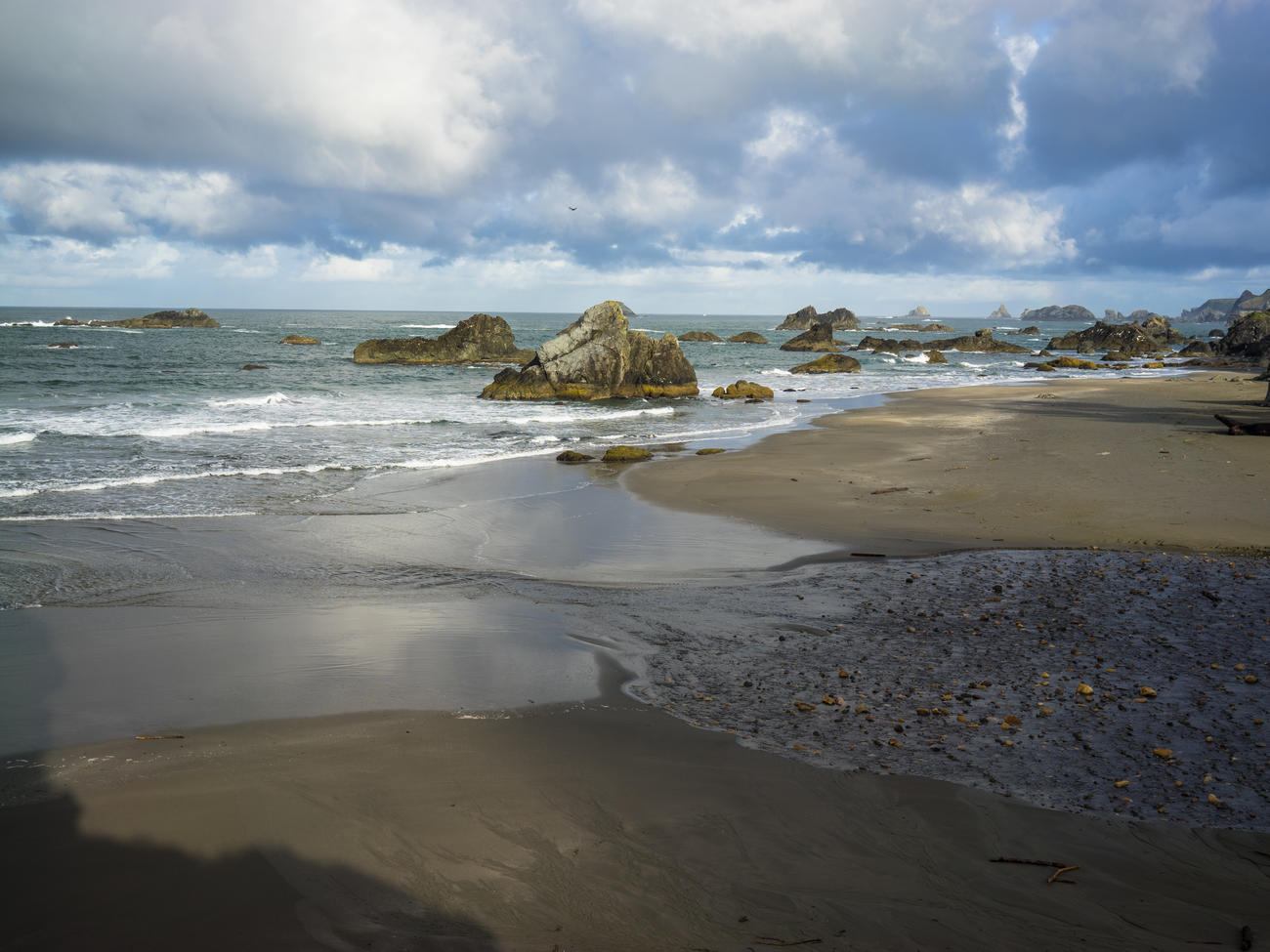
Car Camping on the Oregon Coast
A dramatic, boulder-studded stretch of the southern Oregon coast is the setting for a family vacation

My husband Jim’s idea of camping is backpacking into the wilds, eating freeze-dried stew, and listening to mountain lions screech. My idea of camping is a Forest Service day-use pass and a chain motel with breakfast buffet. Our sons, ages 13 and 7, thought sleeping bags were mainly for spending the night at a friend’s house. It was definitely time for a family camping trip.
Jim and I decided to compromise with three nights of car camping on a dramatic, boulder-studded stretch of the southern Oregon coast, 7 miles north of the Oregon-California border.
Harris Beach State Park, on U.S. 101 just north of Brookings, is one of the few Oregon campgrounds situated close enough to the ocean to afford the occasional sweeping view of the Pacific. Known for great ranger programs and easy beach access, it has creature comforts such as modern bathrooms, self-service laundry, and newspaper vending boxes as well as a nearby supermarket.
